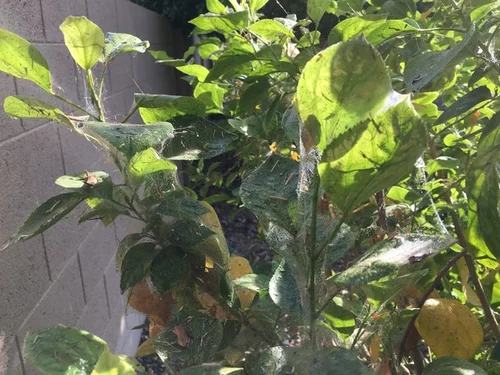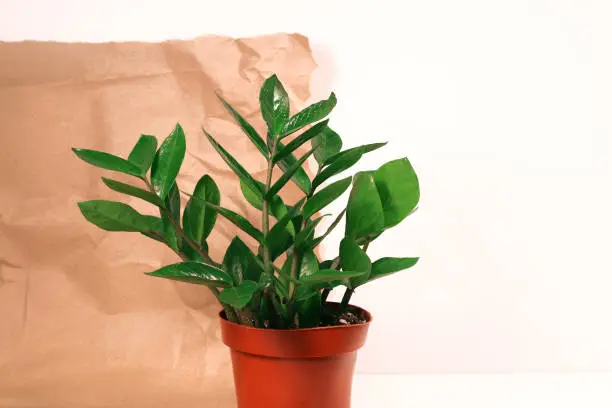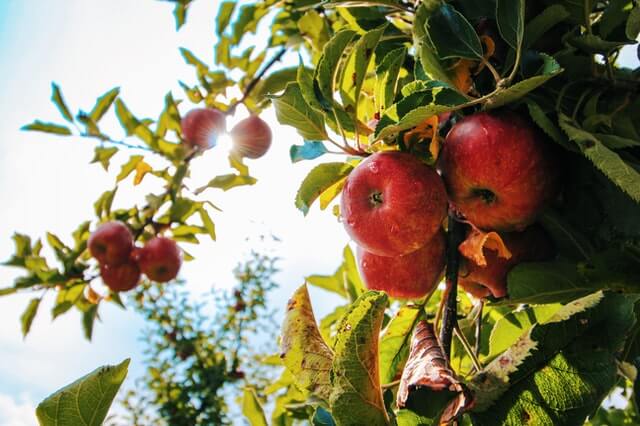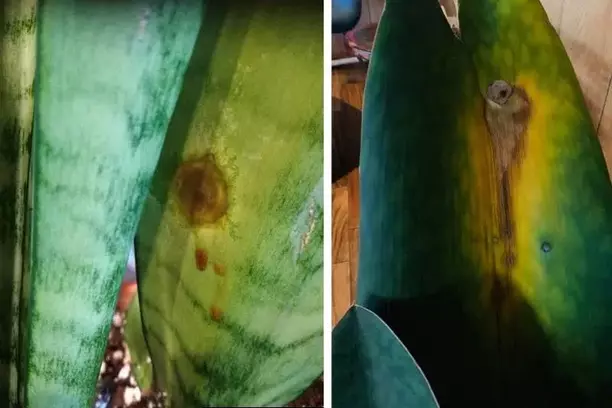Hibiscus is a popular home garden plant due to its therapeutic benefits. Apart from the medicinal benefits of edible hibiscus flowers, they also enhance the visual allure of backyard gardens with their vividly-colored petals and dense, green foliage.
However, a spider mite infestation will quickly leave your hibiscus leaves looking unsightly, with most of the affected leaves turning to a mottled yellow-green appearance. If you’re growing hibiscus at home, you’re most likely wondering what you can do to avoid such an outcome. Read on- as we take you through how to correctly identify spider mites on your hibiscus, how to control the infestation, and the kind of harm that spider mites cause to hibiscus plants.
Identifying spider mites on hibiscus plants

Since spider mites are tiny insects that are hard to spot with the naked eye, the most tell-tale sign that they’ve invaded your hibiscus plants is the change of color in affected leaves from a solid green hue to a mottled yellow-greenish shade. What’s more, if you observe the pattern of the change in color of the foliage and notice that the effect started from the lower leaves and continued upwards, there’s a high chance that spider mites are the cause. This is because these pests can only crawl up the hibiscus plants.
Another visible effect that signifies the existence of spider mites on your garden plants is the presence of a sticky substance on the underside of your hibiscus leaves. This is spider mite waste! If you spot numerous such sticky spots, coupled with severe leaf yellowing, you most likely have a high infestation rate and should act immediately.
If you look closer at the affected leaves, you’ll notice tiny holes, which the spider mites burrow to penetrate the foliage tissue and sap on the plant juices. Finally, check for web networks on the branch tips and leaf undersides. Spider mites get their name from their webbing abilities, and this is the most obvious factor that distinguishes them from other mite species and similarly tiny plant pests like aphids.
With a magnifying lens, you can easily examine your affected foliage closer to determine whether you’re dealing with a spider mite invasion. Typically, they’re small organisms that are no more than 1/20th of an inch long- though the female ones are noticeably larger than their male counterparts. They also bear a crab-like appearance.
Ways to control spider mites on hibiscus
Occasionally, you may be lucky enough to have beneficial insects preying on the spider mites, thus inadvertently helping you control the spider mite damage levels on your hibiscus plants. However, with high rates of infestation, you’ll need more than a stroke of luck from spider mite predators. Here are the methods you can use to control spider mites on your hibiscus:
- Use an appropriate commercial insecticide– since hibiscus flowers are edibles, you need to use an insecticide that’s approved for use on edible plants. Always check the manufacturer’s labeling or website for such information. Also, ensure to wear protective gloves when spraying commercial pesticides on your hibiscus, to protect yourself from toxic chemicals.
- Use a homemade insecticidal oil– If you’re working on a budget, you can always make your insecticidal oil as an alternative to commercial pesticides. To do this, mix a cupful of canola oil with a gallon of water, and- voila- the resulting solution is your homemade pesticide oil solution. Neem oil and horticultural oil are some other natural oil alternatives that you can use in place of canola oil.
- Soak the hibiscus plant– this method should only be reserved for the younger hibiscus plants that still have minimal foliage. It entails wrapping the container on which the plant grows, as well as the base of the plants, to seal off the soil on which the plant grows. The foil is typically secured using tape. The wrapped plant should then be laterally submerged in a bathtub full of warm water to kill off the spider mites and their larvae. This method should be used with extreme caution- however- as it’s likely to lead to leaf drop and root rot should any excess water penetrate the aluminum foil seal.
What damage do spider mites cause on hibiscus?
Spider mites feed on the sap within your hibiscus plant tissues and the chlorophyll on the leaves, leaving the foliage with colorless-yellowish spots; hence the mottled appearance. Since some homeowners grow hibiscus outdoors or indoors to enhance their landscaping appeal or interior décor, this change in foliage color is usually discouraging.
What’s more, chlorophyll supports plant growth by facilitating photosynthesis- a process whereby plants use light energy to turn absorbed nutrients into energy. With a large spider mite infestation causing chlorophyll deficiency- therefore- your hibiscus plants are unlikely to thrive and the worst-affected ones may die off.
The good news- though- is that there’s always a chance that your hibiscus plants will survive a spider mite infestation, depending on how bad the damage done will be by the time you take control measures. For your surviving plants, after you’ve killed off the mites, you can encourage them to bloom and blossom again by providing the appropriate environmental conditions for hibiscus to thrive. These include:
- Ensuring that the hibiscus plants are exposed to adequate sunlight- not too much, nor too little.
- Ensuring to water your hibiscus plants regularly, as this will discourage another spider mite infestation (spider mites thrive in hot and dry conditions).
- Using an appropriate fertilizer to encourage new growth.
References:
[1] https://www.coterc.com/uploads/1/6/1/8/16182092/hibiscus.pdf



